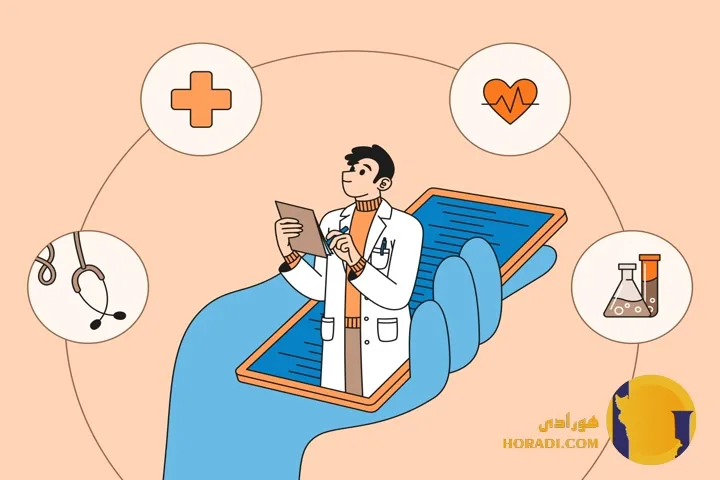
Telemedicine Changes After COVID
The COVID-19 pandemic was a turning point for healthcare worldwide, and one of its most lasting impacts has been the rapid rise and transformation of telemedicine. Before the pandemic, virtual healthcare existed but was limited to niche uses and small patient populations.Telemedicine Changes After COVID
Once lockdowns began and in-person visits became risky, telemedicine shifted from an optional service to a critical tool that kept healthcare systems functioning. Today, in the post-COVID era, telemedicine is not just a temporary solution—it has become a permanent part of modern healthcare delivery.
How Telemedicine Expanded During the Pandemic
When COVID-19 began spreading globally, hospitals were overwhelmed, and in-person visits carried the risk of exposure. Telemedicine became the safest option for both patients and providers. Virtual consultations allowed people to receive diagnoses, prescriptions, and even follow-up care without leaving their homes. Entire specialties, from psychiatry to dermatology, saw dramatic increases in telehealth visits, often growing by hundreds of percent within months.
Improved Access to Care in Remote Areas
One of the most significant changes after COVID has been how telemedicine reduced barriers to healthcare access. Patients in rural or underserved areas can now connect with top specialists without traveling long distances. This has been especially important for communities that previously lacked easy access to hospitals, ensuring better healthcare equity.
Insurance and Policy Shifts
Before COVID, many insurance providers were reluctant to cover telemedicine, and regulations often restricted its use. After the pandemic, governments and insurers recognized its importance. Today, most health insurance plans in the U.S. and many countries cover virtual visits, and licensing rules have been relaxed to allow doctors to provide care across state lines. These policy changes have made telemedicine more sustainable and accessible in the long run.
Mental Health and Teletherapy Growth
Mental health services saw some of the most profound changes through telemedicine. During the pandemic, anxiety, depression, and stress increased worldwide, and virtual therapy sessions became a lifeline for millions. This shift has continued, with teletherapy now a mainstream option. Many patients prefer it due to its privacy, convenience, and lower cost compared to in-person visits.
Integration of Remote Patient Monitoring
Telemedicine has grown beyond video calls. Remote patient monitoring tools now allow doctors to track blood pressure, glucose levels, heart rates, and more from a distance. Patients with chronic illnesses like diabetes or heart disease can share real-time data with their doctors, reducing hospital visits and preventing emergencies.
Digital Divide and Accessibility Issues
Despite its benefits, telemedicine has also highlighted inequalities. Patients without reliable internet or access to digital devices have been left behind. Elderly populations often struggle with the technology required for virtual visits. After COVID, healthcare providers are working to close this digital divide, offering training, phone-based consultations, and government support for improved broadband access.
Hybrid Healthcare Models
One of the most lasting outcomes of telemedicine’s rise is the adoption of hybrid models of care. Many healthcare systems now combine in-person and virtual services, offering flexibility based on patient needs. Routine check-ups, medication management, and follow-ups can often be done online, while physical exams and urgent care remain in person. This balance has improved efficiency and reduced overcrowding in clinics.
Telemedicine in Specialized Fields
Beyond general healthcare, telemedicine has transformed specialized fields. Dermatology uses high-quality images for remote diagnosis. Cardiology relies on wearable heart monitors that connect patients with their doctors. Even surgery has begun to integrate telehealth for pre- and post-operative consultations, saving patients time and money.
Global Collaboration and Future Growth
Telemedicine has also encouraged global collaboration in healthcare. Doctors across different countries now consult with one another through digital platforms, sharing expertise in real time. As technology continues to improve—with advances in AI, 5G internet, and remote diagnostic tools—telemedicine is expected to become even more sophisticated, potentially offering virtual reality consultations and AI-assisted diagnostics.
The Future of Telemedicine After COVID
Looking ahead, telemedicine is set to remain a vital part of healthcare. Patients increasingly expect the convenience of online consultations, and providers are investing in digital infrastructure to meet demand. The challenge will be ensuring equitable access while maintaining high standards of care. If these challenges are met, telemedicine could become the backbone of global healthcare systems.









































